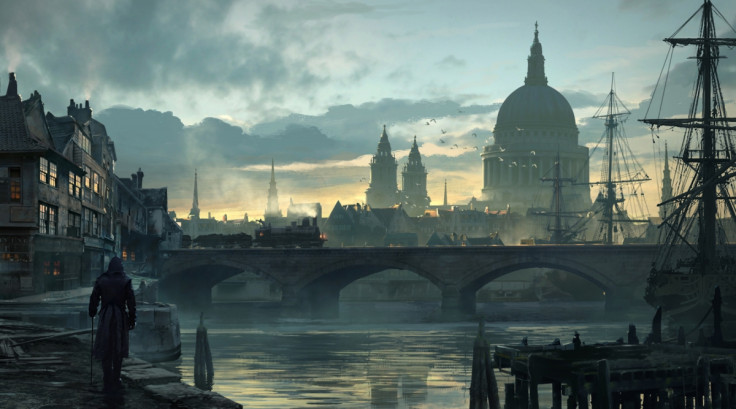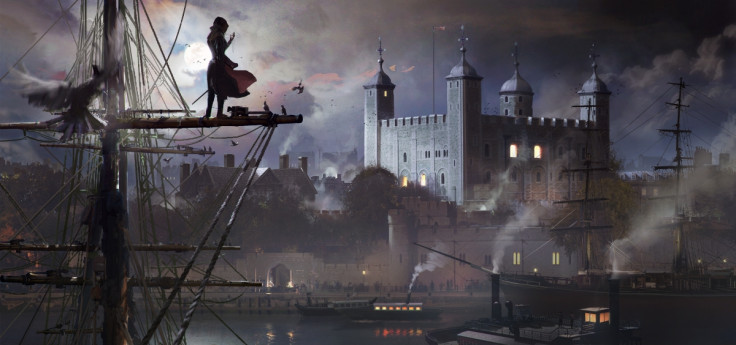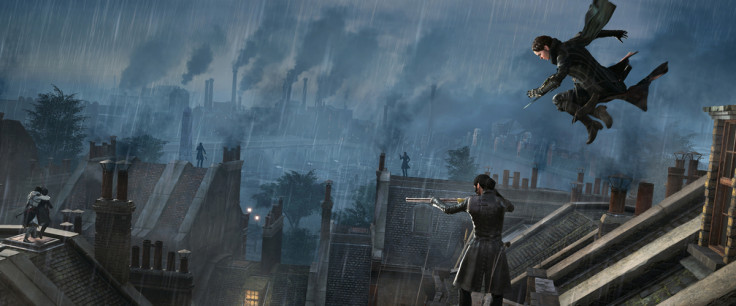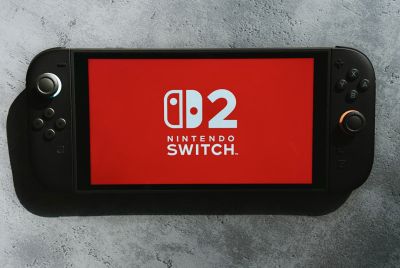Making Assassin's Creed Syndicate: Ubisoft Quebec on bringing history back to life

Whether you love or hate Ubisoft's blockbuster adventure series Assassin's Creed, you can at least have a certain appreciation for series' ability to transport gamers to some of the most beautiful locations in human history.
Like a digital TARDIS, Assassin's Creed has given budding time-tourists the chance to take a stroll through Damascus, scramble over the rooftops of revolutionary Paris, and even take a quite literal, stab at the pope deep in Vatican City. The last stop on Ubisoft's whirlwind tour, Assassin's Creed Syndicate, dropped players into the heart of industrial Victorian London - in the year 1868. How, though, does the developer decide where, or perhaps more accurately, when, to take its series next?
As most Assassin's Creed players will already know, the answer is hidden in history itself.
No place like London
"We explored different possibilities, but Victorian London in 1868 offered us the possibility to build the first modern Assassin's Creed game. It felt like the perfect fit for us," recalls Assassin's Creed Syndicate creative director, Marc-Alexis Coté, speaking to IBTimes UK before Ubisoft announced the series would be taking a break in 2016.

"For research, many members of the team actually went and explored the city, taking thousands of photos in the process. We also read historical books about the time period, watched movies and TV shows set during that era, and made use of a staff historian who was constantly helping us deliver historical accuracy."
By using every shred of information available, Ubisoft was able to recreate industrial London in all of its smoggy, cockney beauty. In fact, the world of Syndicate is the largest in Assassin's Creed history; a technical marvel that's more nuanced than you might think.
Player expectations demanded the team include a whole host of landmarks, but constructing a living, breathing world around the likes of Big Ben, Trafalgar Square, Covent Garden and the Tower of London is easier said than done. You can't just throw everything into a blender and hope for the best, explains Coté. The city needed to work as a whole, but, at the same time, had to be balanced and unique enough to offer players a sense of progression and discovery.
"The city is divided into seven very different boroughs. From the dense and poor district of White Chapel to the wealth and green spaces of Westminster, the player truly feels what it was like to live in 19th century Victorian London," says Coté.
Explaining how every borough is not only visually different, but contains its own unique ecosystems as well, he added: "For example, the police presence was far superior in richer neighbourhoods than in slums, where almost nobody would dare go, and the big factories and worker houses of Southwark encourage parkour gameplay."
Meet the twins
From the squalid streets of White Chapel to the upper-class townhouses of Westminster, the unique sense of identity that permeates the city is mirrored in the protagonists themselves. In a series first, the Quebec team decided that one way mix up gameplay, and raise the narrative stakes, was to introduce two very different playable characters: master assassin Evie Frye and her twin brother, Jacob.
"We wanted to have the twins Evie and Jacob because we knew that the two different perspectives and the distinct personalities would tell a great story. Jacob is a brash and rebellious Assassin. He sees the inequalities created by the Templar's grip on London society and to him his objective is simple: he needs to eliminate every Templar to free the people from their fate," says Coté.
"Evie is the eldest of the Frye twins and also a Master Assassin. She is the more calculated of the two, executing both her plans and her targets with meticulous precision. She also has a stealthier approach than her brother."

Coté tells me that both characters have changed over the course of development, with the team keen to make sure each protagonist could stand on their own two feet. Everyone was aware of the risks that came with splitting the narrative down the middle, and at times there was a fear that they'd bitten off more than they could chew.
"We all know how difficult it can be to create a character that 'works'. How could we create two?However, I was convinced from the start that the relationship between the twins would be a key selling point of the experience," says Coté. "There are great Assassins in the legacy of the Creed, but I think this is one area where we need to be very wary. There will always be this tendency to gravitate towards something that already worked. We must fight that tendency hard, because we'll most always end up with a pale copy of the original."
A sense of Unity
As if the pressure of creating the first Assassin's Creed title with two leads wasn't enough, the Quebec team had also been given the unenviable task of dispelling the sour taste left by 2014's bug-ridden release, Assassin's Creed Unity.
Ramping up pressure even more was the fact that Syndicate would be Ubisoft Qubec's first game in the series. The team had previously worked on Brotherhood, but this was the first time they'd taken the creative lead on a Creed project.
"The release of Unity certainly raised the stakes, but the team worked really hard and we took our responsibilities very seriously," says Coté. "This is what the Ubisoft Quebec team had aspired to ever since we started working on Assassin's Creed Brotherhood. I love working under pressure, and there sure is a lot of it when you're working on a game like Assassin's Creed.
"But, as a creative director, you have to take that pressure and channel it into your creativity. You can't let it freeze you in place."

Still, the team couldn't just innovate with carefree abandon. They needed to balance their desire to push boundaries with the series' historical trappings. Creative liberties could be taken here and there, but Coté wanted to stay true to his belief that, at its core, Assassin's Creed is about allowing players to relive seismic historical moments through the eyes of someone who was there.
"This is the core we must stay true to. All the rest should and must evolve to be consistent with the particular time period, characters, story, etc, that you are creating. It all blends in together - gameplay is not conceived separately," continues Coté. "For instance, we introduced the rope launcher in Syndicate because Victorian London buildings were taller than the architecture in any past AC game. It was consistent with the era, it made parkour richer and players truly enjoy it."
Ensuring every gameplay pillar is era-specific might sound like a strange mantra - given that Assassin's Creed is a series about master assassins, templars, and ancient all-powerful artefacts - but it's one that binds each entry in the franchise together, whether it's a game about Caribbean pirates, the French Revolution, or industrial London.
"You never know for sure if you've found the right formula, says Coté, "but you have to trust your instincts and the core of the fantasy."
For all the latest video game news follow us on Twitter @IBTGamesUK
© Copyright IBTimes 2025. All rights reserved.




















